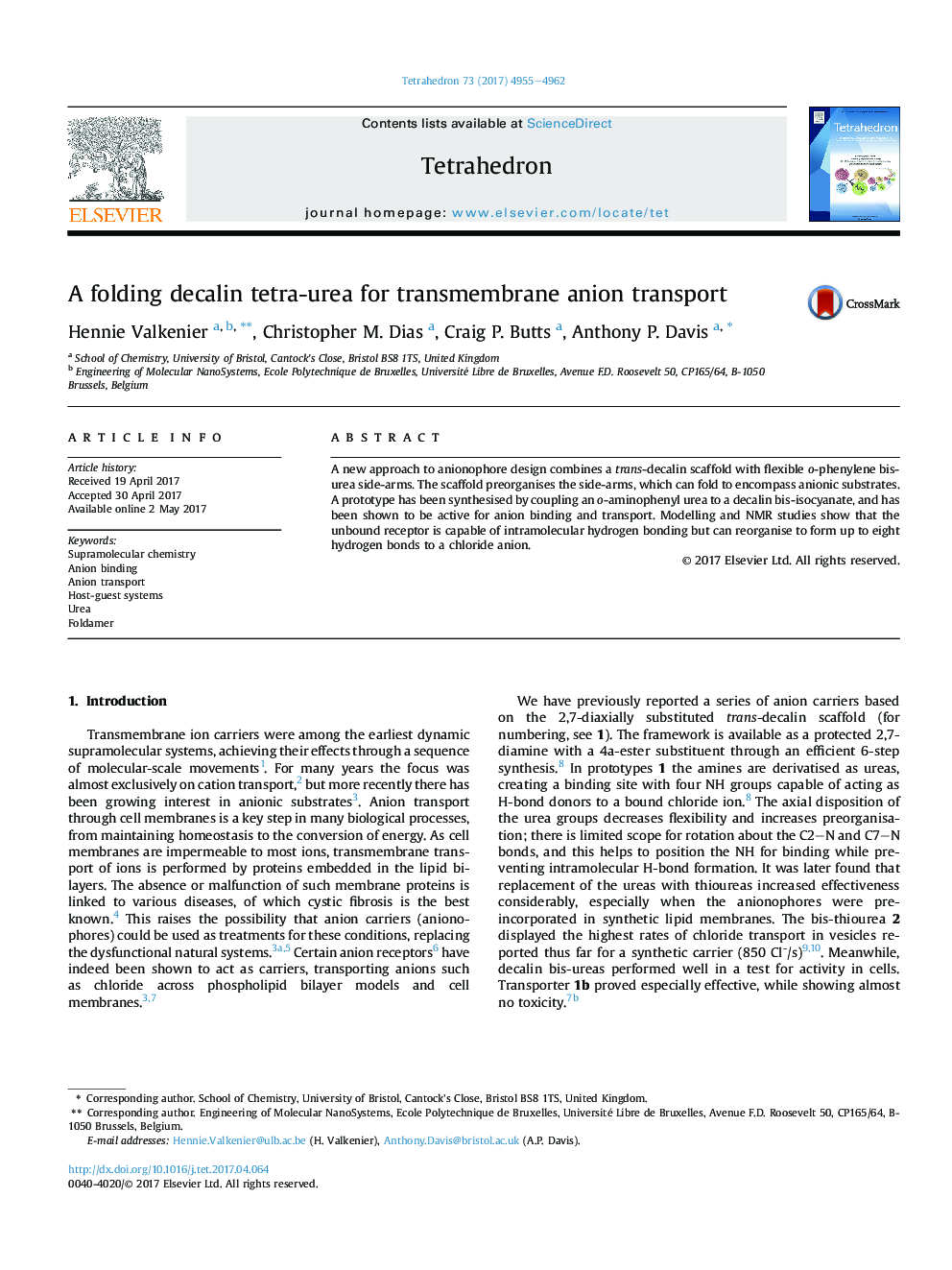| Article ID | Journal | Published Year | Pages | File Type |
|---|---|---|---|---|
| 5212183 | Tetrahedron | 2017 | 8 Pages |
Abstract
A new approach to anionophore design combines a trans-decalin scaffold with flexible o-phenylene bis-urea side-arms. The scaffold preorganises the side-arms, which can fold to encompass anionic substrates. A prototype has been synthesised by coupling an o-aminophenyl urea to a decalin bis-isocyanate, and has been shown to be active for anion binding and transport. Modelling and NMR studies show that the unbound receptor is capable of intramolecular hydrogen bonding but can reorganise to form up to eight hydrogen bonds to a chloride anion.
Graphical abstractDownload high-res image (262KB)Download full-size image
Related Topics
Physical Sciences and Engineering
Chemistry
Organic Chemistry
Authors
Hennie Valkenier, Christopher M. Dias, Craig P. Butts, Anthony P. Davis,
